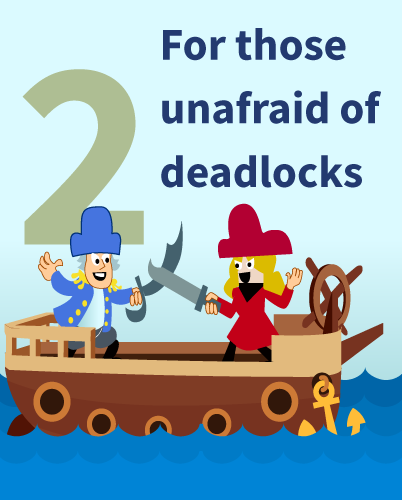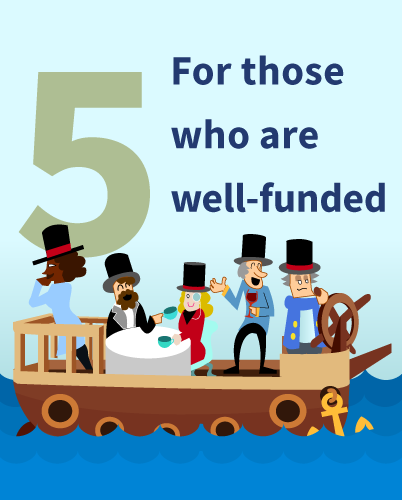One of the duties of a company’s founders is to set up its board of directors. The first hurdle is deciding how many people will be on the board. Here are the pros and cons of different board sizes.
 |
PROS
Speed: Since you ARE the board you can get through consents quickly.
Control: You are the sole decision maker. |
CONS
Not a Strong Start: A board of one doesn’t send a good signal to investors. Successful companies are able to attract talent, including at the board level.
No Independent Director: You will need an independent board director to approve self-interested transactions.
It’s Lonely: A meeting with yourself is no fun! |
| Some actions (e.g. implementing a Stock Incentive Plan) require a Stockholder consent signed by the holders of a majority of the company shares. For these, unless you own 50% of the stock, you’ll need to seek other approvals even if you’re the only board director. |
PROS
Buddy System: Now you have someone to share the tough decisions, or at least have lunch with! |
CONS
Deadlock: Resolutions typically need a majority (more than 50%) to pass at a board meeting (and must be unanimous for written consent). So you both have to agree on everything to pass anything. |
 |
| I once talked to a founder who said he was thinking of writing up a special document with clauses that dealt with what happens when he and his founder on their two-person board “tied.” In fact, it’s better not to think of a 50/50 board split as a tie. 50% is not a majority, so it’s not a tie, it’s a NO. A tie won’t grant stock, or sign the office lease, or do much of anything else. |
 |
PROS
Ready for Seed Financing: Ideal for a company ready for a seed financing. Seed financing documents normally set aside a seat for the common shareholders, a seat for the investor, and an independent third seat that both parties agree on.
Fair and Impartial Judgement: Leaves room for an Independent Director who can vote when an interested (or conflicted) director recuses themselves. For example, if an investor is on the board, they should abstain from approving a financing in which they are participating. |
CONS
Odd Man Out: A board of three is still small and may not leave room for an independent director. |
PROS
Four: Better than one—leaves room for an independent director and more diversity of thought and experience. |
CONS
Deadlock: A board of four can have similar problems to a board of two. If the board directors are split evenly on a vote, there is no majority and the resolution is not approved. |
 |
 |
PROS
Ready for Series A: Boards with five or more directors are common for companies that are on their Series A round of funding. The exact allocation and number of board seats vary, but generally, there will be one seat for a founder and one seat for the CEO. There will be one or two seats for the VC that invested in the Series A. There will also probably be one or two seats reserved for an independent director. |
CONS
Too many cooks in the kitchen: This board size can start to get unwieldy to manage. Smaller companies with no preferred stock rarely have boards this large since they don’t have to. |
| I rarely see boards with more than five directors in startups, so I don’t get into it here—but you should know that that’s an option too. |
Author: Kathy Nolan, Client Services Manager and Corporate Attorney for Shoobx, Inc.
Illustrator: Jason Grover, Designer for Shoobx, Inc.
Interested in learning more about working with your company's board? Check out our posts on Independent Directors and Board Meetings.










